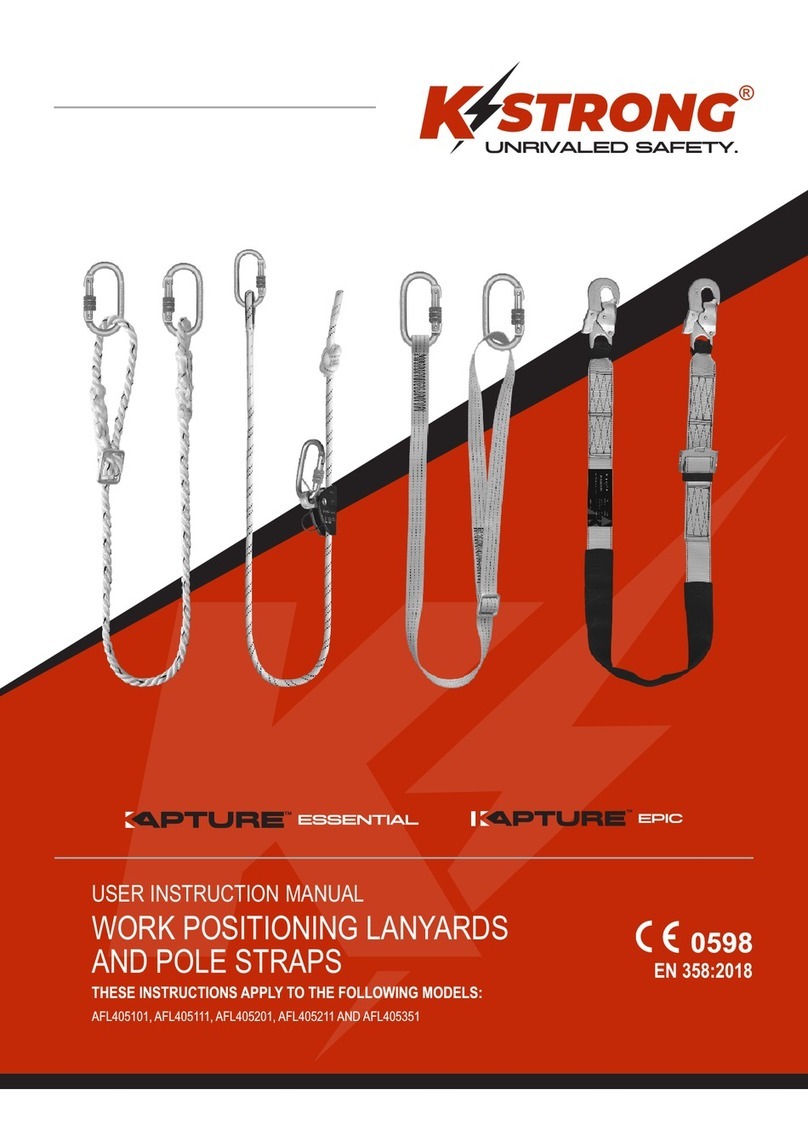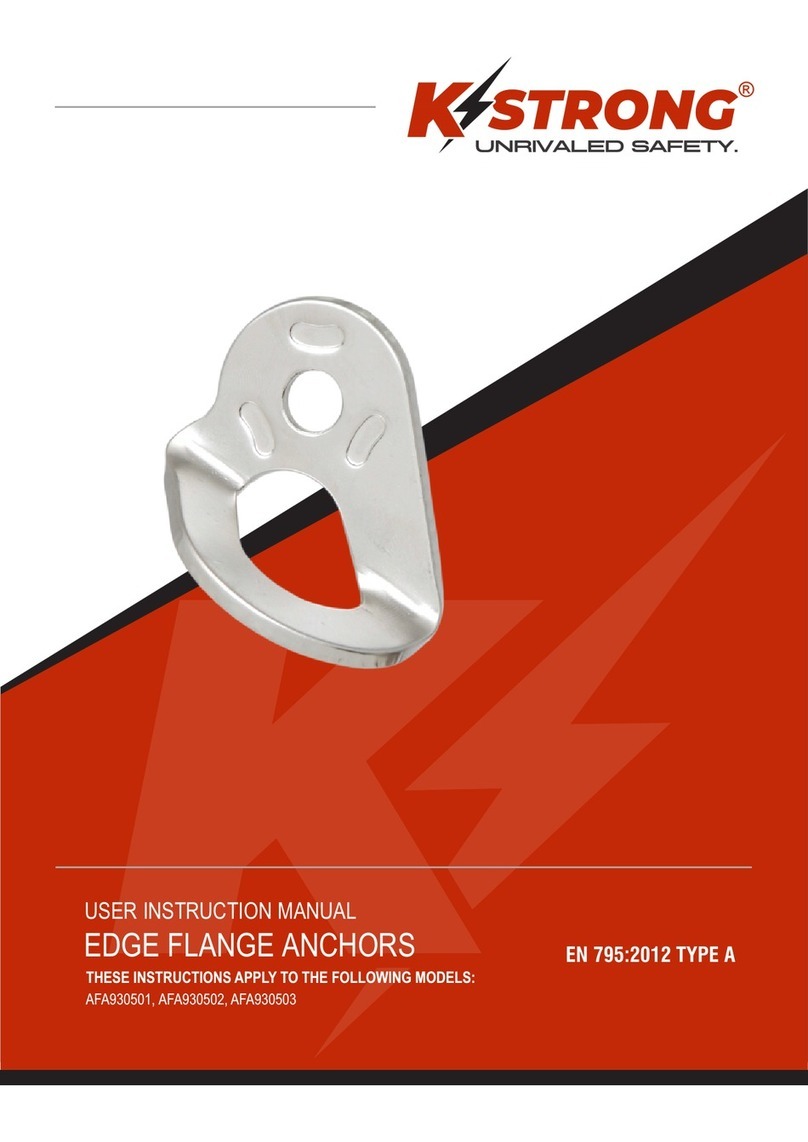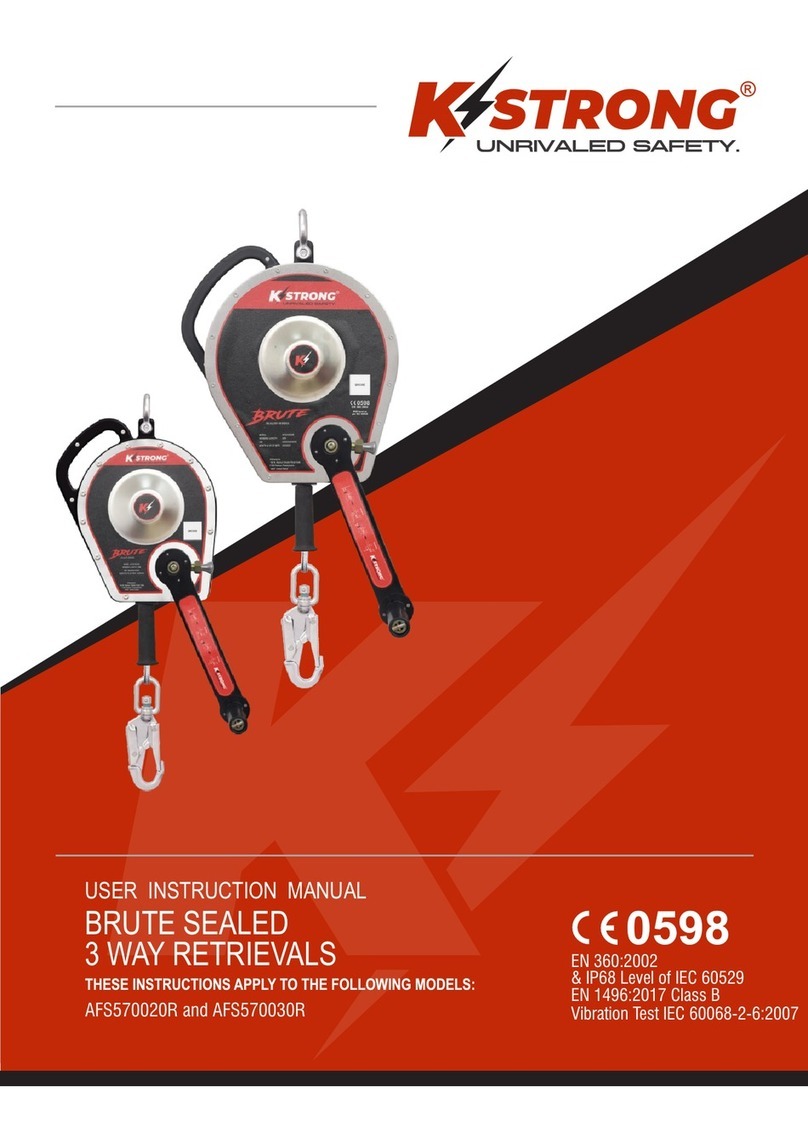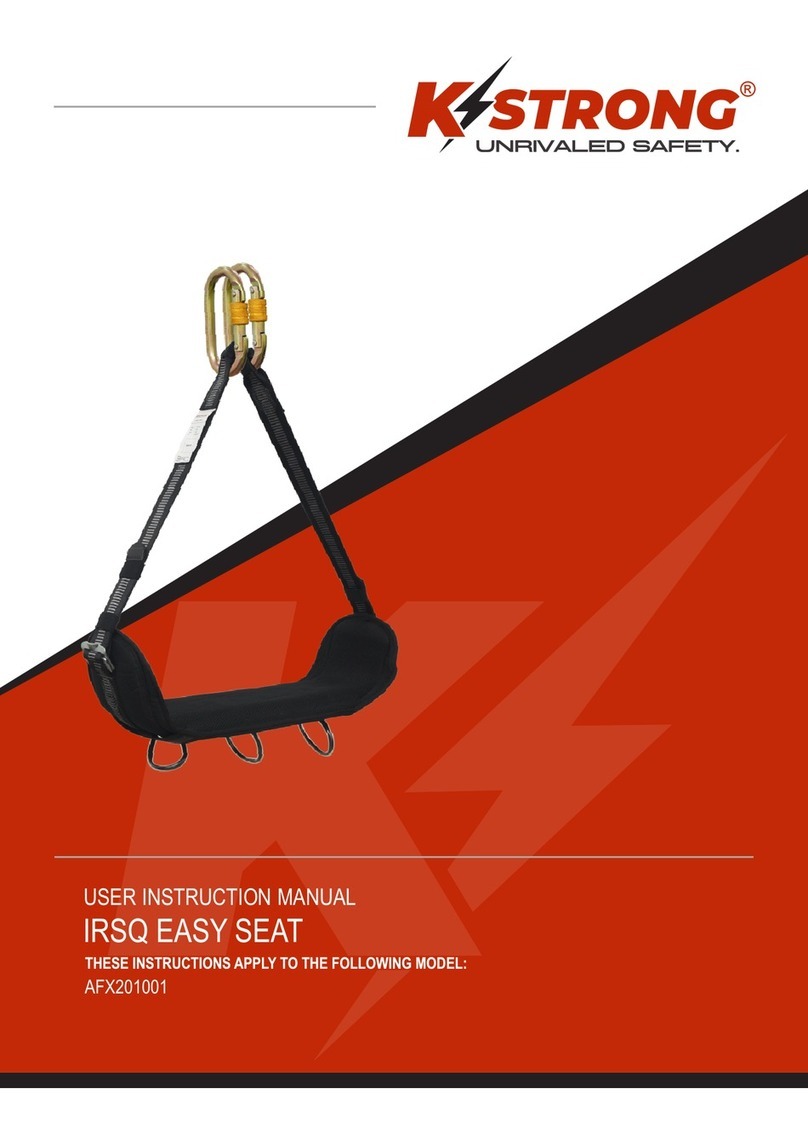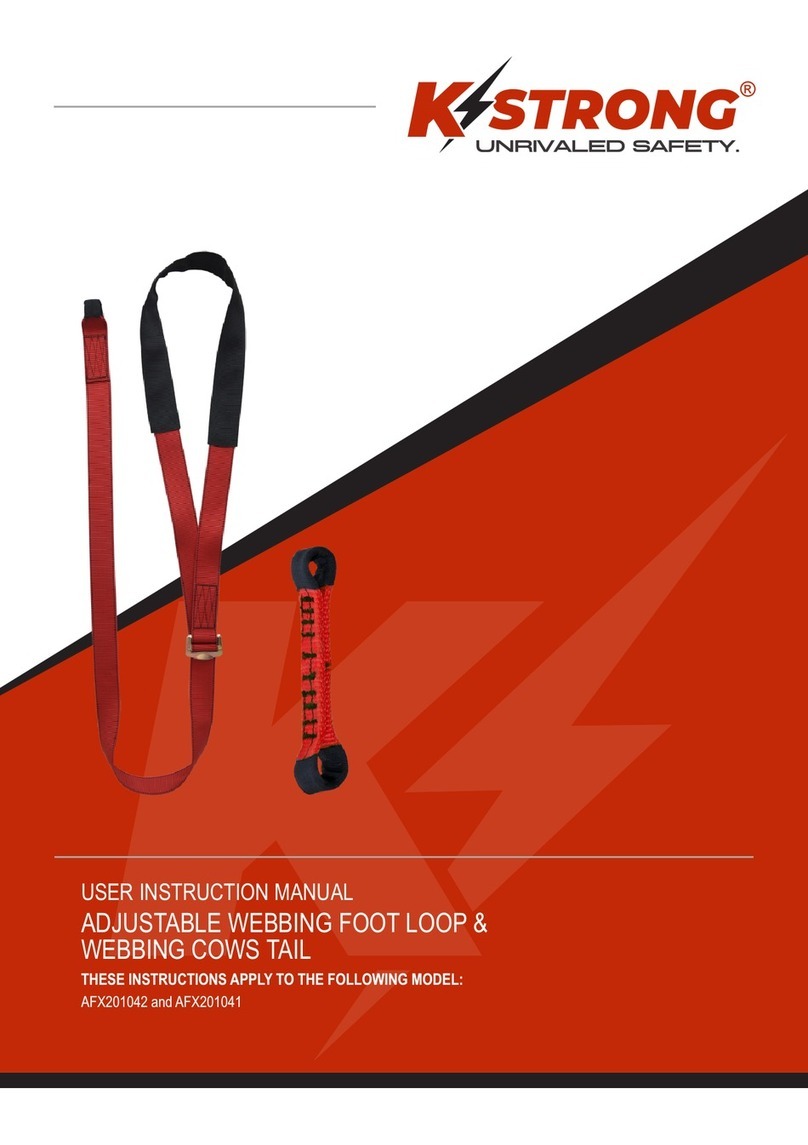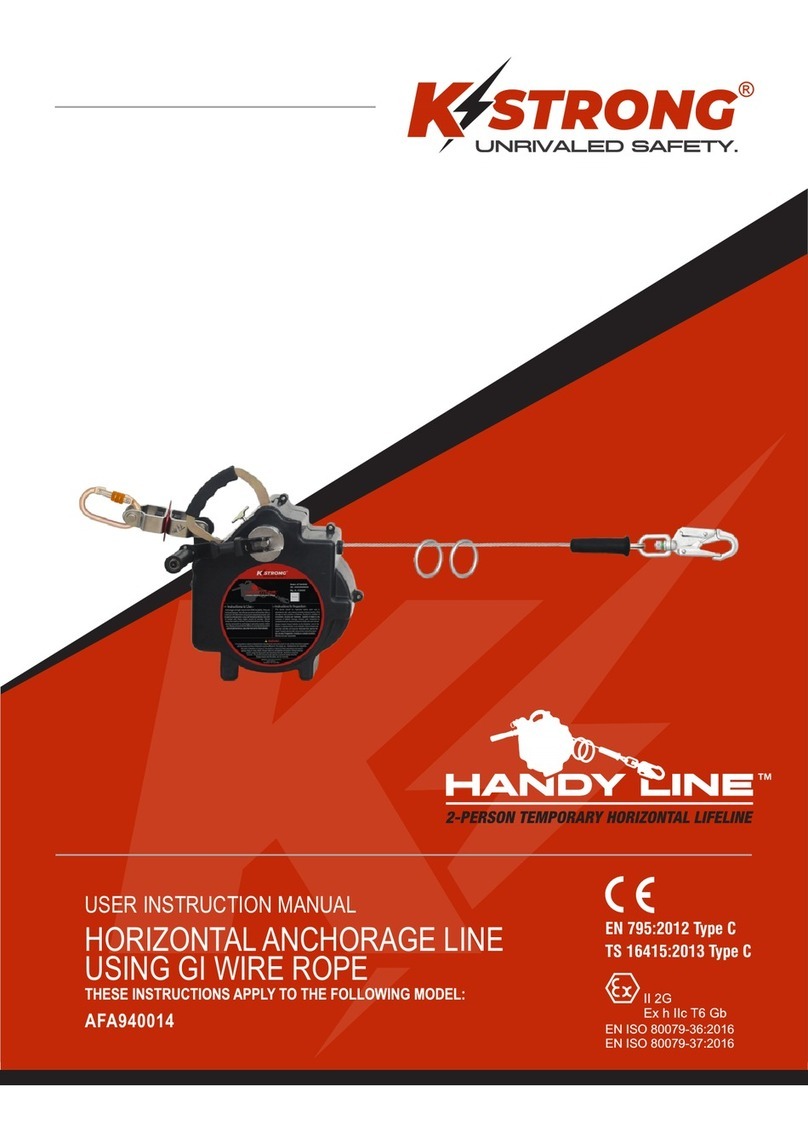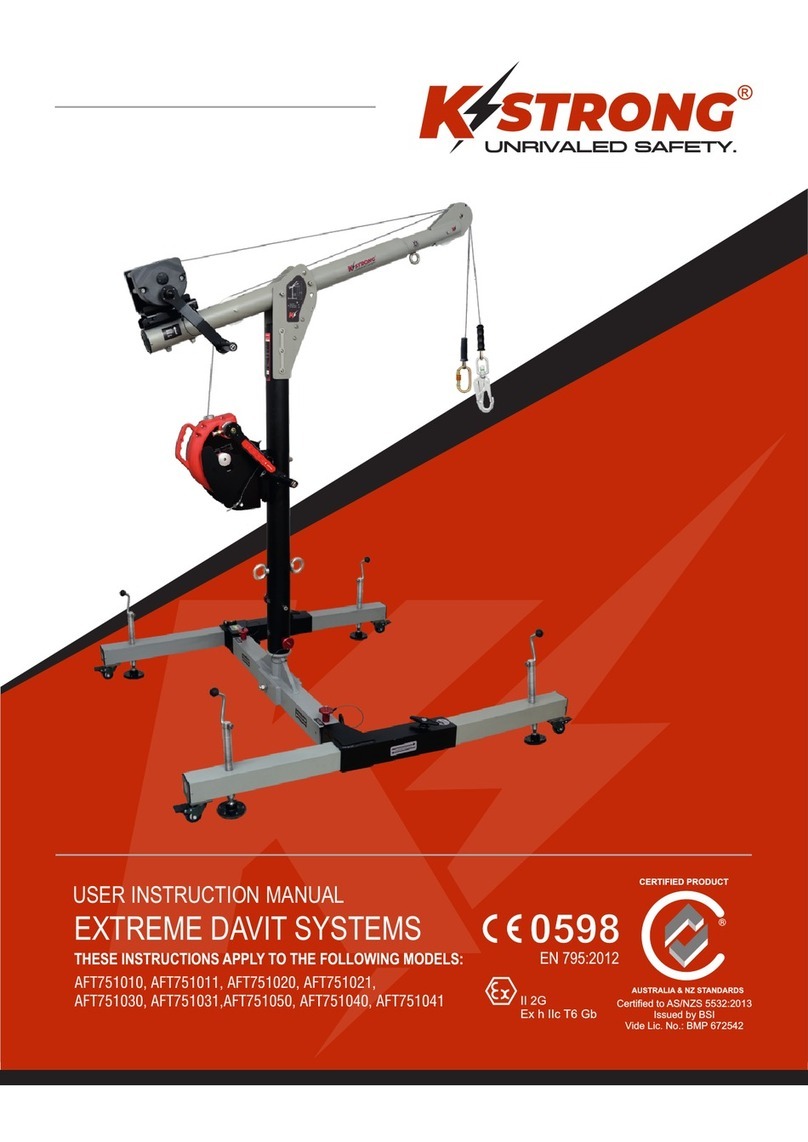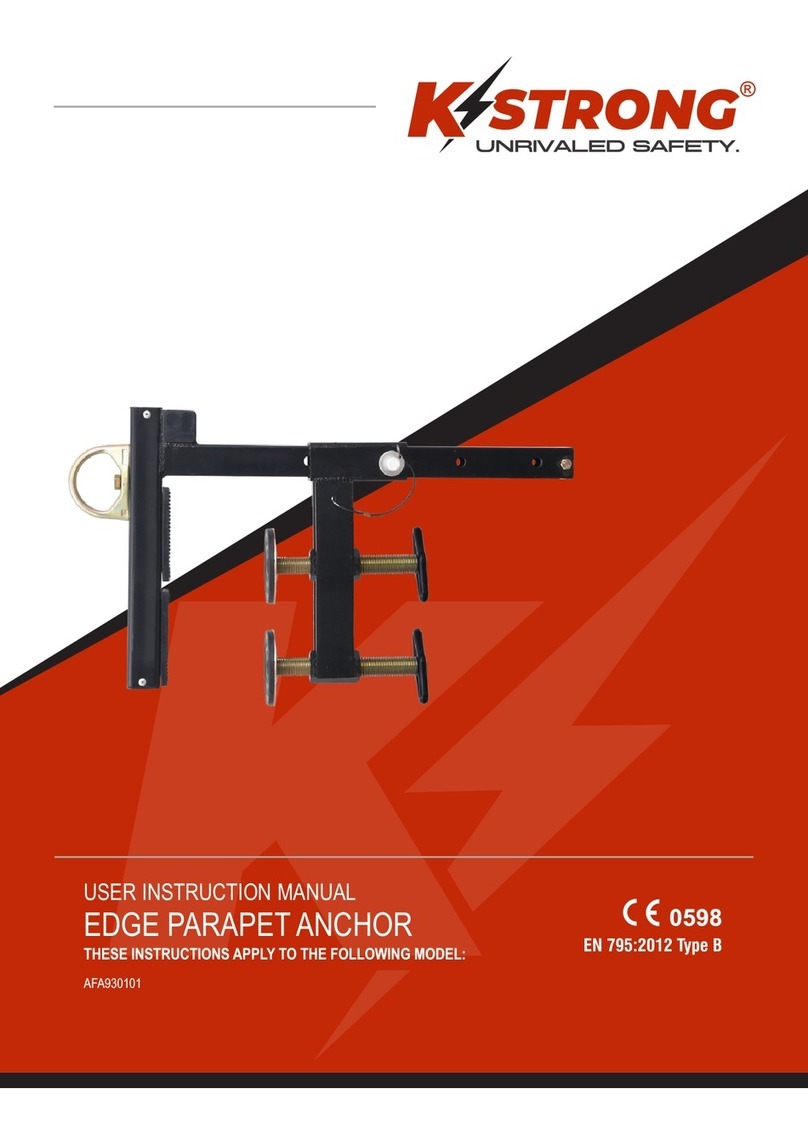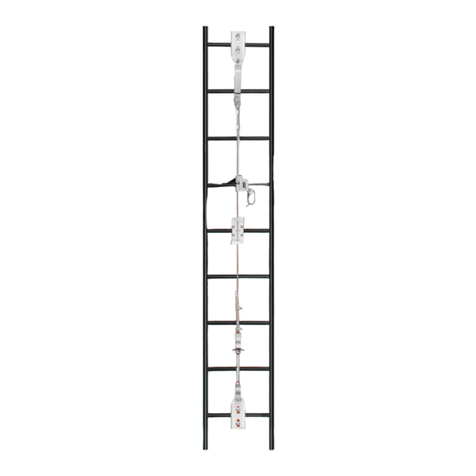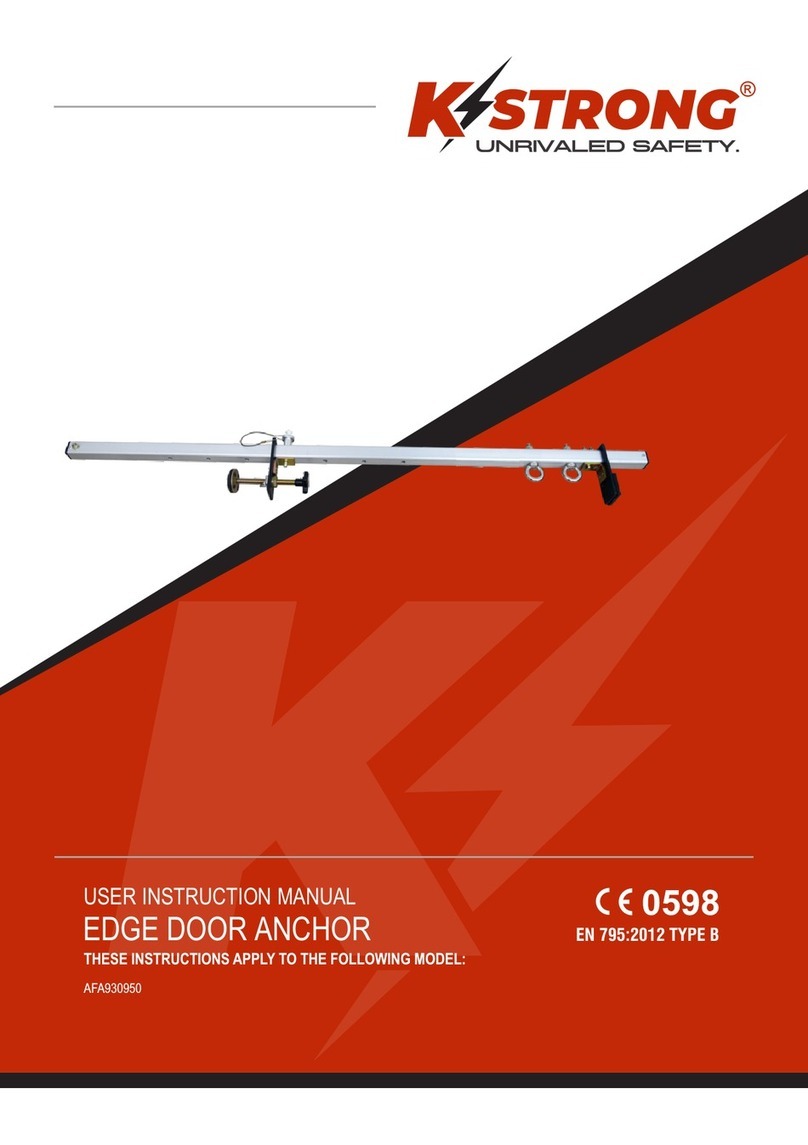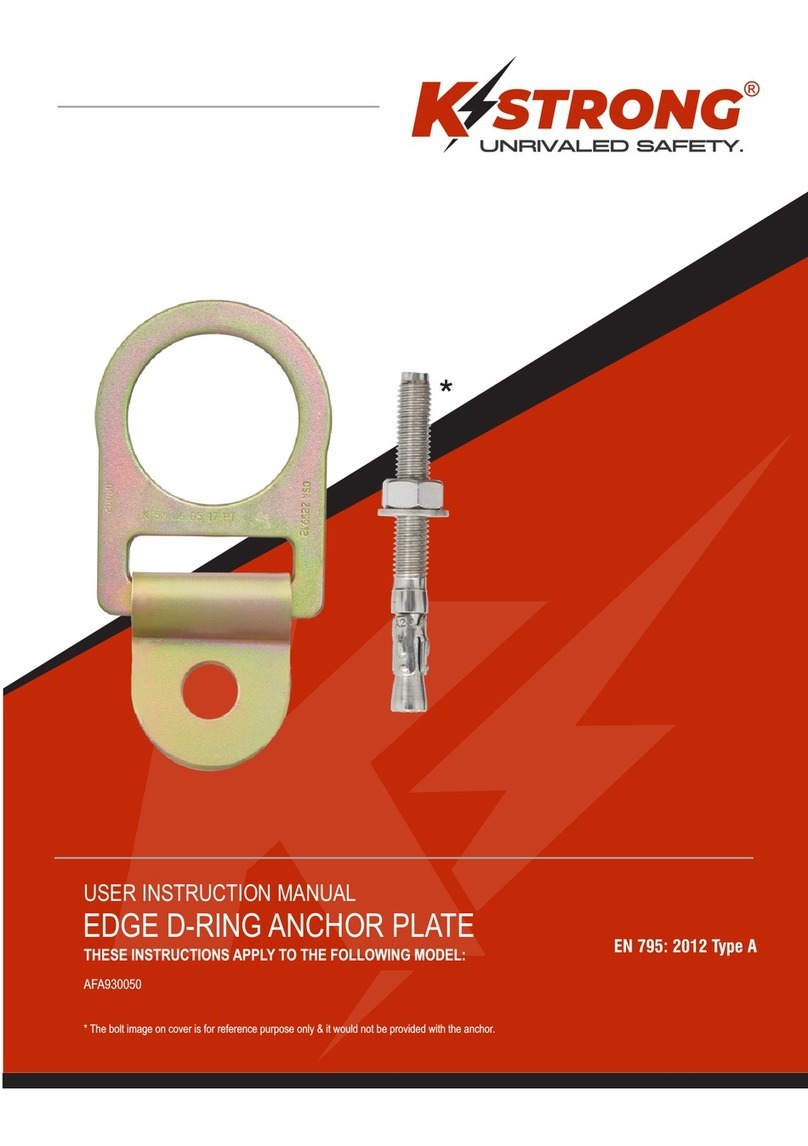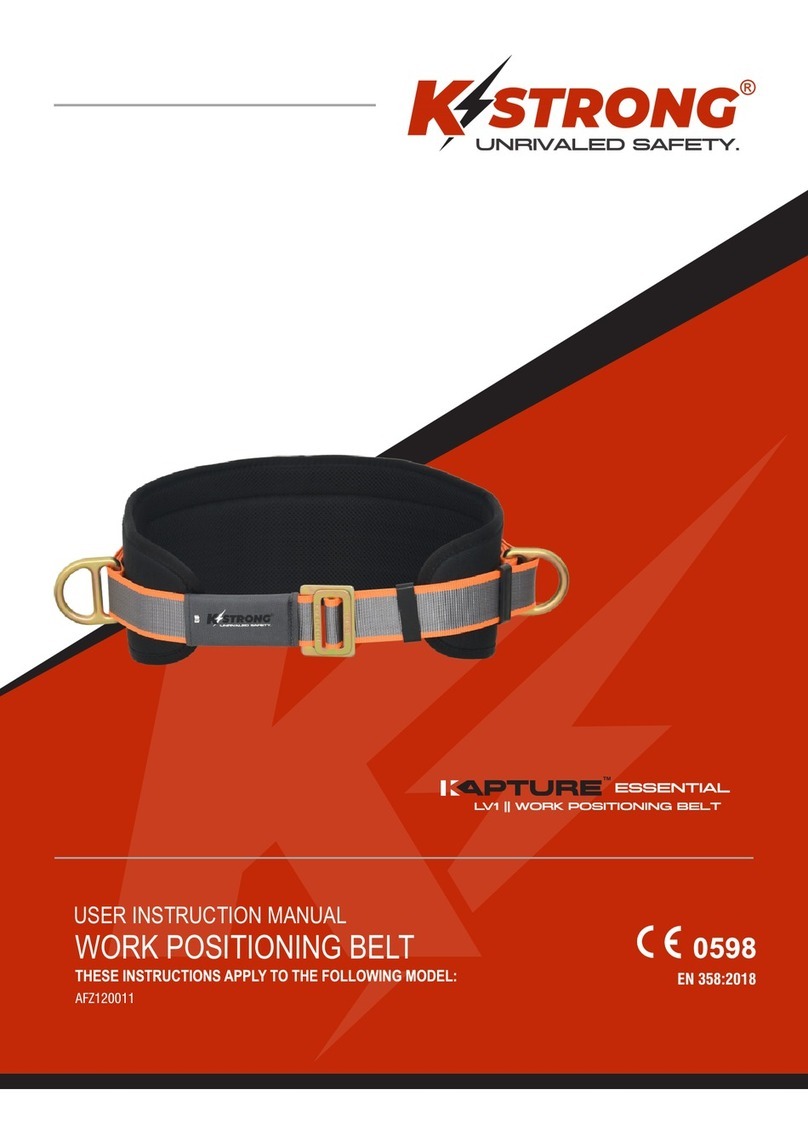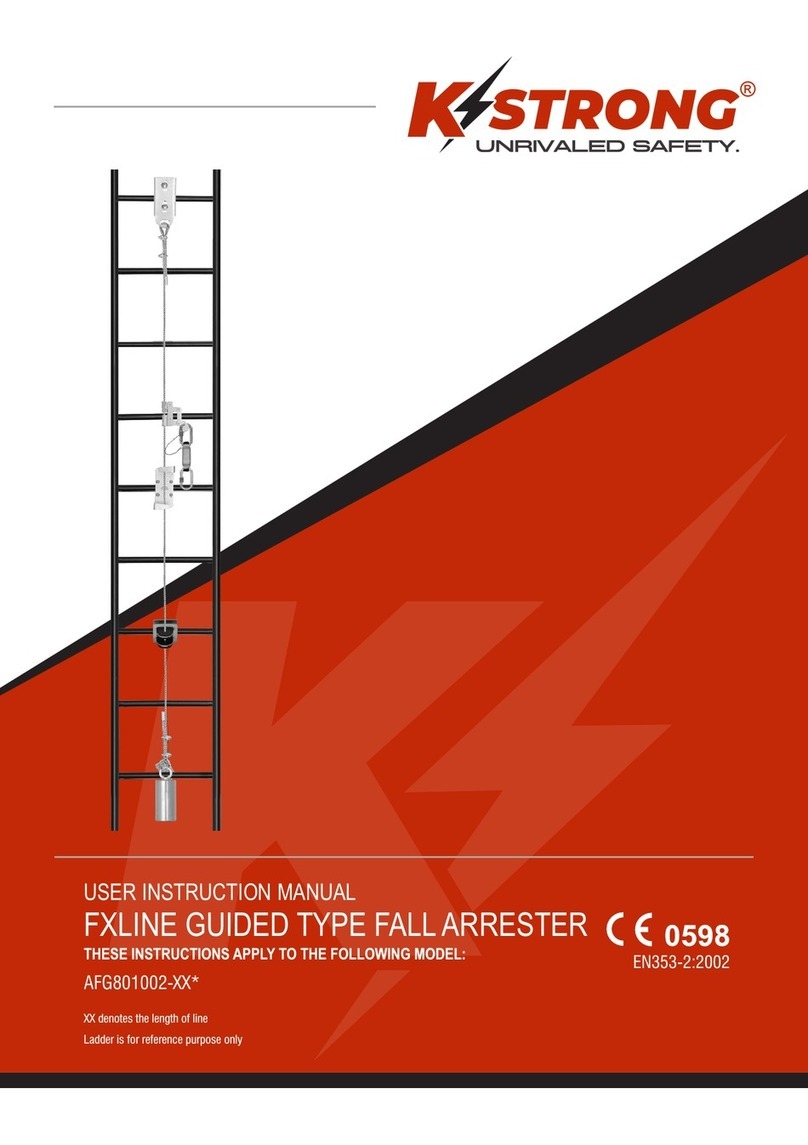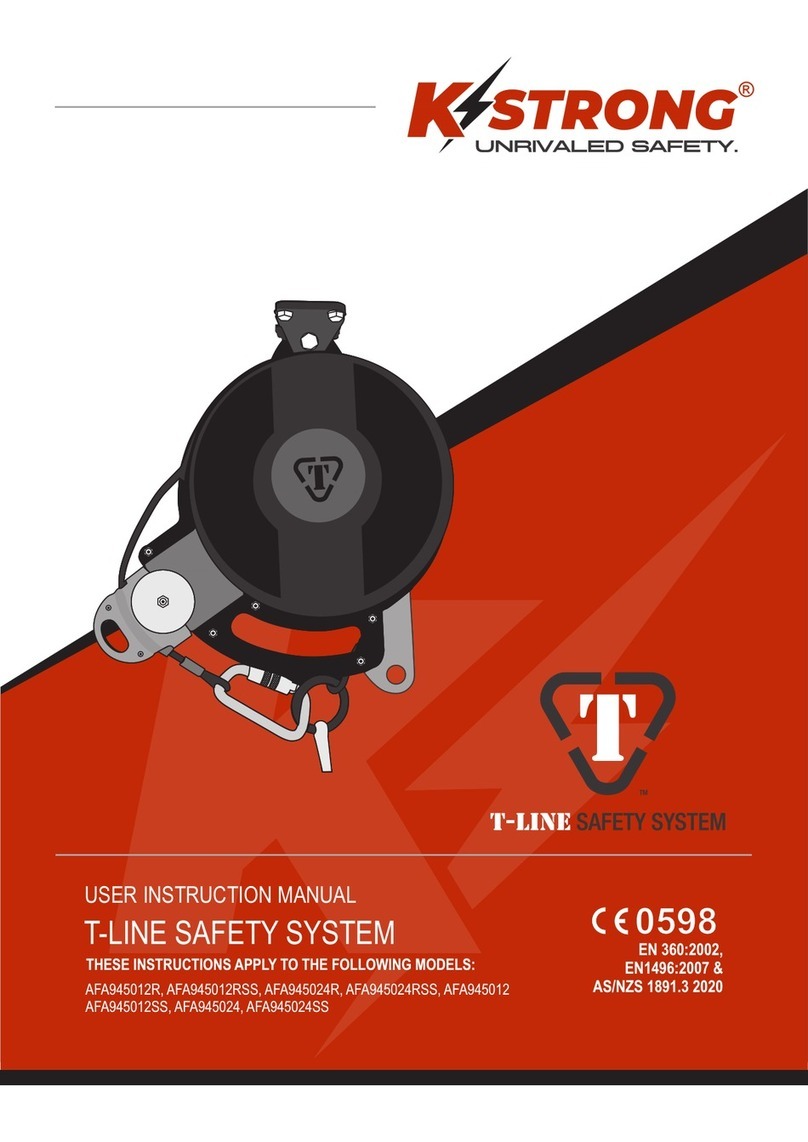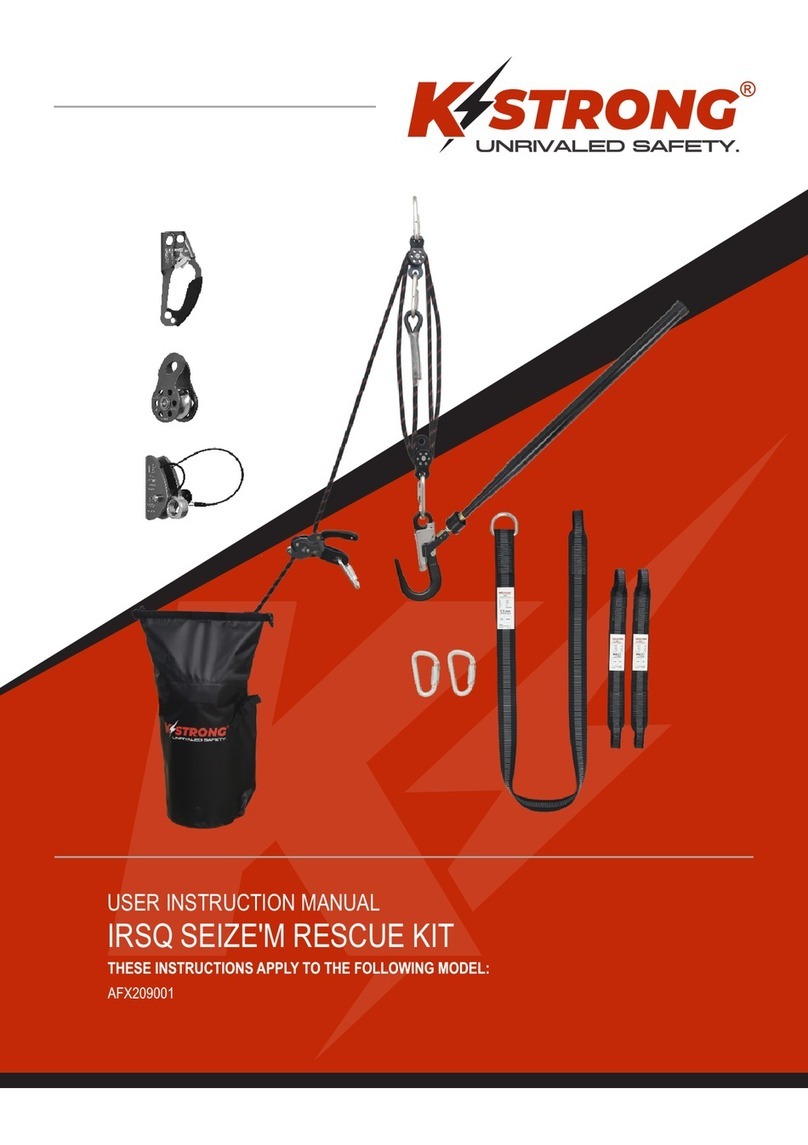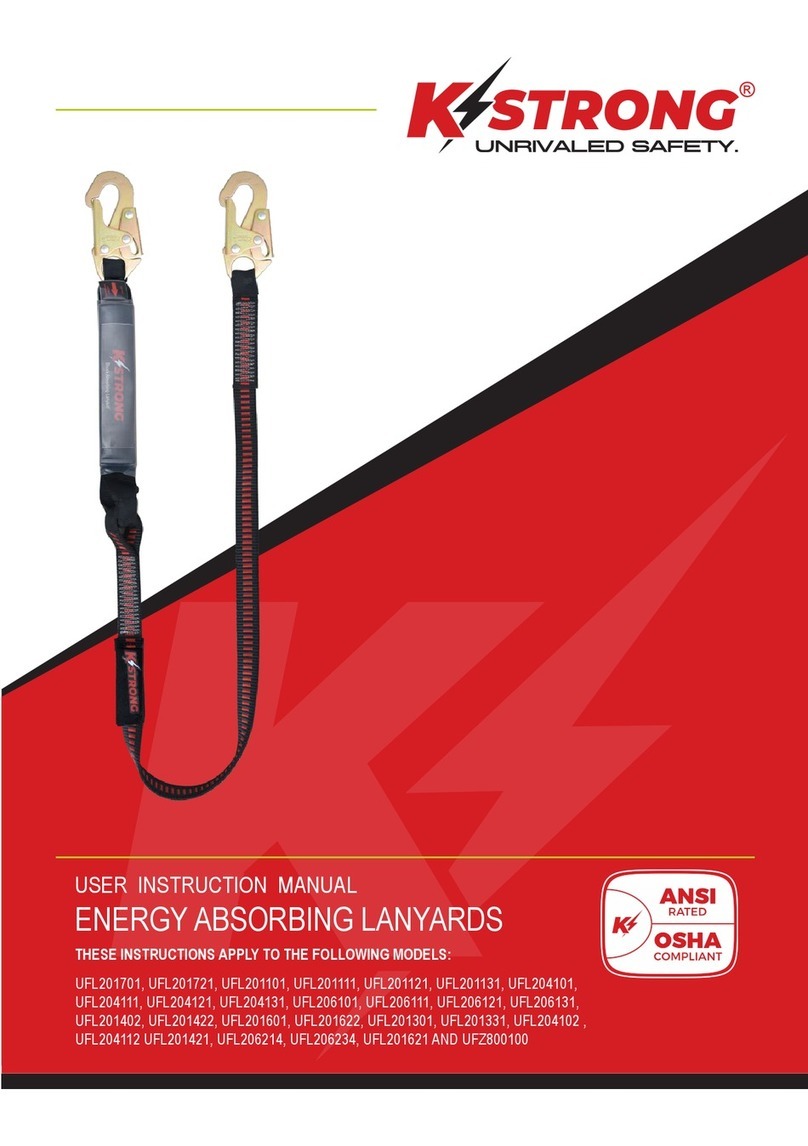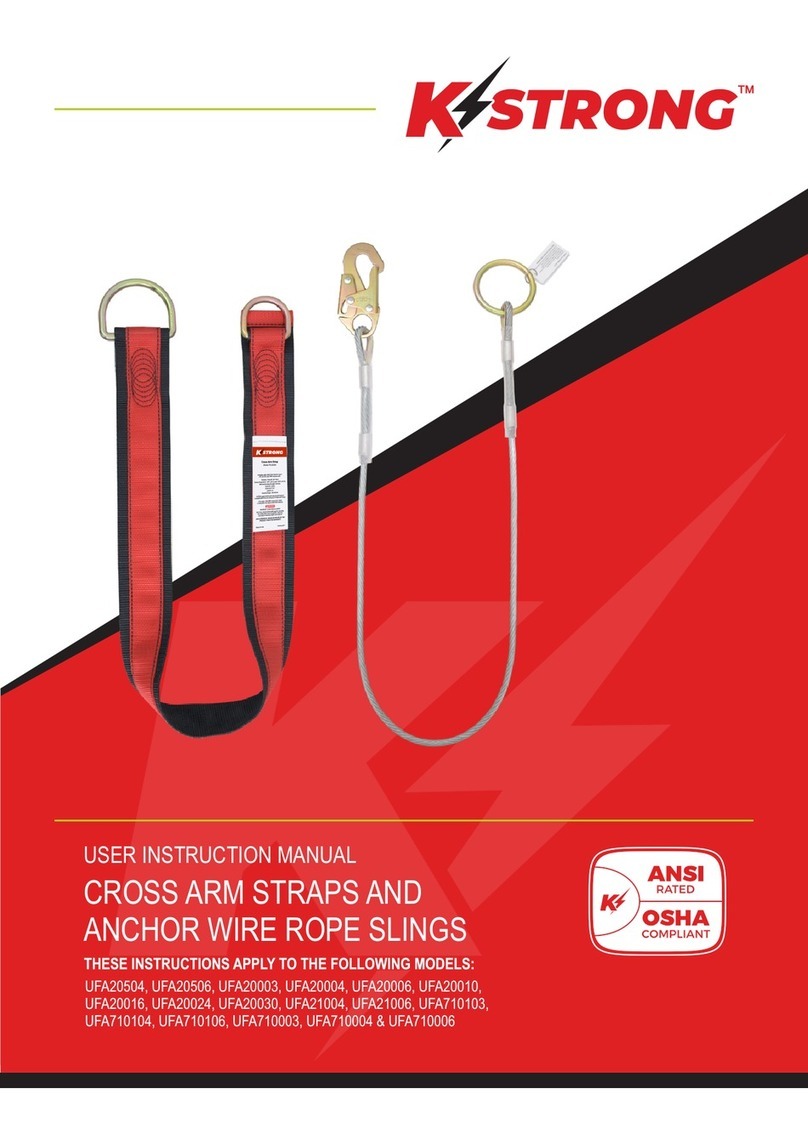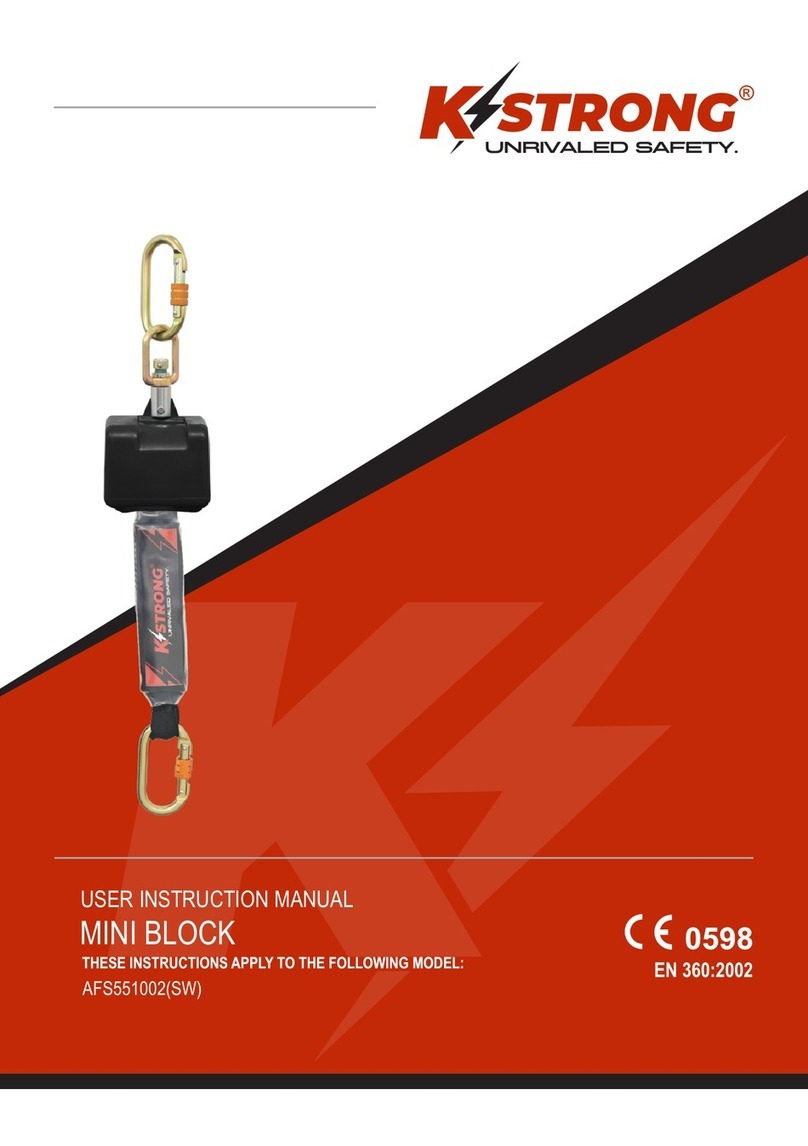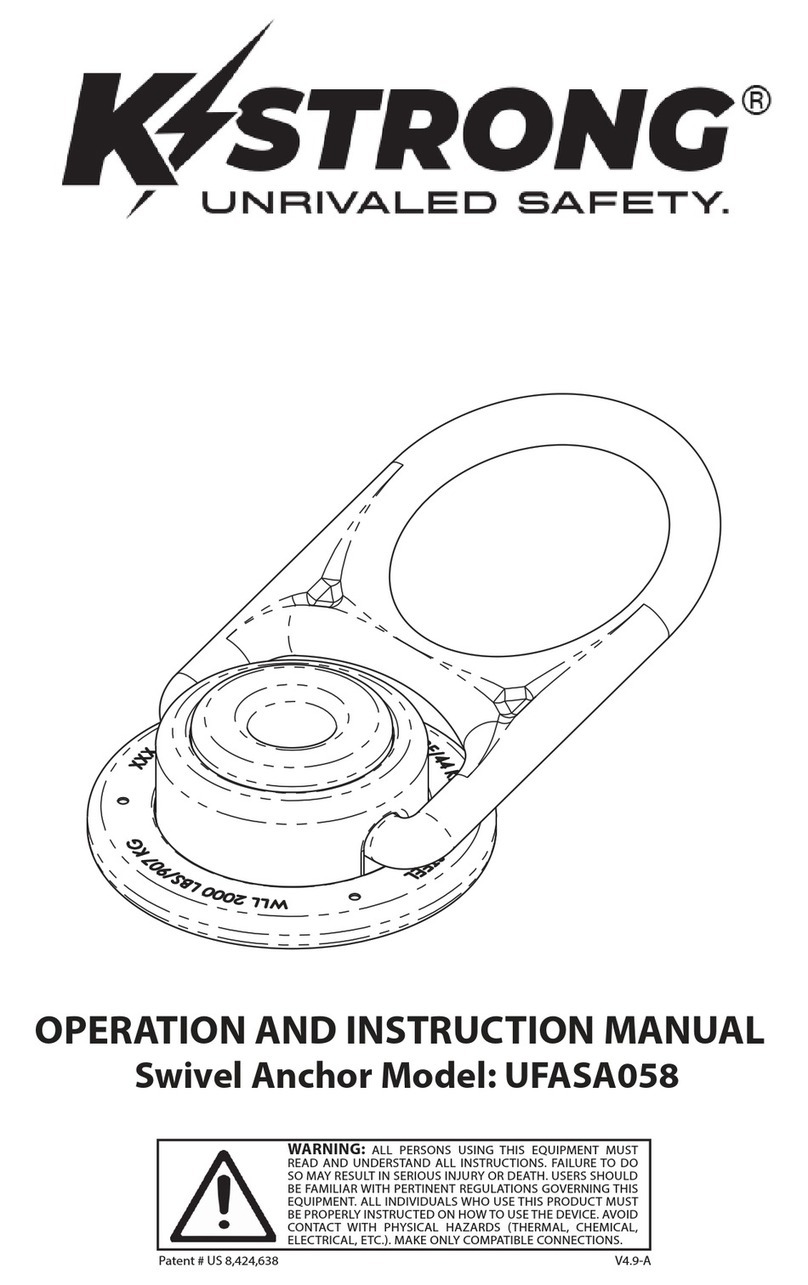
1. APPLICATION:
Possible usage: The fall arrestors are guided type fall arrestors on a flexible anchorage line made of a three strand polyamide rope /
Kernmantle rope dia ranging from 11mm to 16mm as per system requirement. The fall arrestor accompanies the user without requiring
manual adjustment during upward or downward movement, and locks automatically on the anchorage line when a fall occurs.
Applications of these types of products include: inspection work, construction and demolition, maintenance, oil production,
window washing, and other activities where the need exists for fall arrest or restraint.
The following definitions describe these applications:-
Ÿ
rope grab, lanyard, and full body harness (body support). Applications include: production of a worker on scaffolding,
powered platforms, or ridding a boats wain’s chair. Maximum permissible free fall i s 6feet.
Restraint: The rope grab is used in combination with a lifeline, lanyard or connector, and body support to restrain the user from
reaching a hazard (sloped or leading edge r oof work). No ver tical free fall is possible.
The Following Limitations Must Be Considered Before Using This Product:
Capacity: This equipment is designed for use by persons with a combined weight (person, clothing, tools, etc.) of no more than
140Kg.
Note: Not more than one person should be attached to a single lifeline. Please do not add any lanyard/ connector between fall
arrestor and user as it can increase the distance from arrestor to user connection point. This can lead to product failure and
cause serious injury or death.
Ÿ Free Fall: Restraint systems must be set up such that there is no possible vertical free fall. Personal fall arrest systems must be
rigged in such a way to limit the free fall to 2m (EN 353-2:2002). See associated connecting subsystem manufacturer's
instructions for further information.
Ÿ Fall Clearance: Make certain that enough clearance exists in your fall path to prevent striking an object. The amount of
clearance required is dependent upon the type of connecting subsystem used (lanyard, lifeline), the anchorage location, and
the amount of stretch in the lifeline.
Ÿ Corrosion: Do not leave this equipment for long periods in environments where corrosion of metal parts could take place as a
result of vapors from organic materials. Sewage and fertilizer plants, for example, have high concentrations of ammonia. Use
near seawater or other corrosive environments may require more frequent inspections or servicing to ensure corrosion damage
is not affecting the performance of the product.
ŸChemical Hazards: Solutions containing acids, alkali, or other caustic chemicals, especially at elevated temperatures, may
cause damage to this equipment. When working with such chemicals, frequent inspection of this equipment must be performed.
ŸHeat: This equipment is not designed for use in high temperature environments.
ŸTo a D-ring to which another connector is attached.
ŸIn a manner that would result in a load on the gate.
Protection should be provided for this equipment when used near welding, metal cutting, or similar activities. Hot sparks may
burn or damage this equipment.
ŸElectrical Hazards: Due to the possibility of electric current flowing through this equipment or connecting components, use
extreme caution when working near high voltage power lines.
ŸComponent Compatibility: The rope grab addressed by these instructions is intended for use with KStrong lifelines and lifeline
subsystems only.
ŸTraining: This equipment is to be used by persons who have been properly trained in its correct application and use.
2. SYSTEM REQUIREMENTS:
Connecting to Anchorage or Anchorage Connector: When attaching the lifeline or lifeline subsystem to the anchorage or
anchorage connector, ensure the connector (self-locking snap hook or karabiner ) is fully engaged and locked onto the connection
point. Ensure connections are compatible in size, shape, and strength.
Connecting to the Harness: For fall arrest applications, connect to the dorsal D-ring located between the shoulders on the back of the
full body harness. For restraint applications, the dorsal or frontal harness attachment may be used. If using a body belt for restraint
applications connect to the D-ring opposite the restraining load. Ensure connections are compatible in size, shape, and strength.
Connecting to the Rope Grab: When connecting an energy absorbing lanyard to the rope grab, attach the lanyard end to the rope
grab to reduce possible interference with the operation of the rope grab by the energy absorber “pack”. Some rope grab models may be
supplied with a permanently attached lanyard or energy absorber. Do not attempt to attach additional lanyards or connectors to these
subsystems. If using a karabiner to connect directly to the rope grab, ensure the karabiner does not interfere with the operation of the
rope grab. Ensure connections are compatible in size, shape, and strength. Ensure the connector attached to the rope grab allows the
handle to rotate freely, and does not interfere with the rope grab operation.
Ÿ
Ÿ
Ÿ
Ÿ
Ÿ
Ÿ
Ÿ
Fall A rrest: The rope grab is used as part of a complete fall arrest system. Such systems generally include: a lifeline,
04
